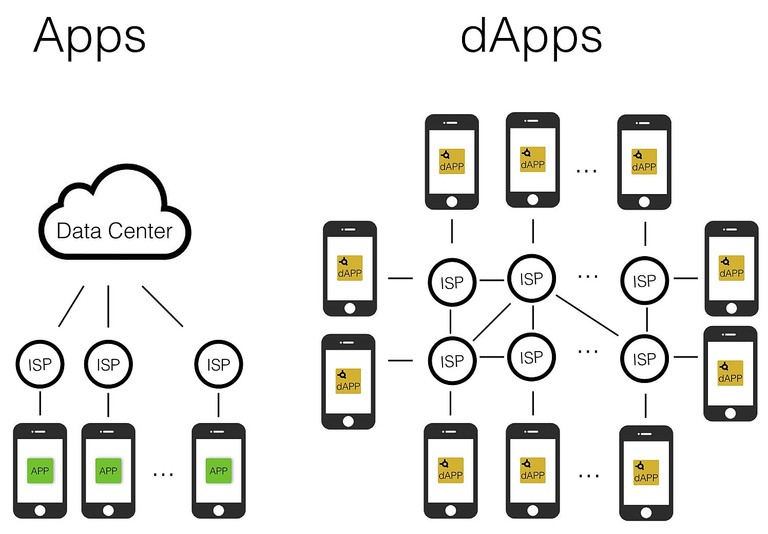The birth of bitcoin by Satoshi Nakamoto in 2018, marked the beginning of a new industry, the decentralized economy of the blockchain. The bitcoin blockchain invention was created to become the first digital currency, and to solve the double-spending problem where people need a third party or a central authority in order to enable them to carry out transactions. With the advent and success of the bitcoin blockchain, other projects that were inspired by the bitcoin leap sprang into life.
As of the time this post was created, there are about 1,658 cryptocurrencies which are built on various blockchains. Platforms like Ethereum and Eos enable the development decentralized applications (Dapps), and in today’s post, we will be talking about EOS, and in subsequent posts, we talk about the other projects built on the EOS blockchain.
What is EOS?
EOS is very similar to Ethereum as it is a platform and it aims to someday become the decentralized operating system that supports industry size applications. It was founded by Dan Larrimer, who is also the founder of Steem and Bitshares. EOS plans to carry out two epic claims, which is one of the reasons it became very popular within the cryptocurrency in 2017 where they raised $4 Billion making EOS the highest amount ever raised by a cryptocurrency during its ICO.
EOS plans to completely remove transactions fees on its platform, as well as be able to possess the ability to conduct millions of transactions per second. So, you see, EOS is a pretty ambitious project, and $4 billion raised in ICO comes at no surprise.
So, in a nutshell, ESO operates as a smart contract platform which serves as a decentralized operating system where industrial-scale DAPPS can be deployed.
What are DAPPs?
Commonly called decentralized applications, these applications run on a peer-to-peer networked computer rather than on a single system. And how EOS hopes to make these DAPPS run efficiently on the blockchain and what does EOS hopes to achieve with these DAPPS? The very nature of DAPPS is what can easily enable to effortless function by itself, transporting passengers, even when you’re not available.
And for DAPPS to be accepted in the mainstream, it is important these criteria are met
Support Millions of Users
By the very nature of DAPPS, they are built to be scalable, this is in order to enable millions of users to use it without having much friction. This is crucial if DAPPS are going to be accepted on the mainstreamUsage comes at no Cost
Developers worldwide should be able to develop dapps that will be accessible by users - free of charge. Majority of the tools built on the blockchain are open source, hence won’t have to pay in order to benefit from these dappsEasily Upgradeable
The Eos platform should allow developers the true freedom to upgrade the various Dapp applications whenever and wherever. And when there is a bug detected in a given dapp, developers should be able to fix the bug, in a way that won’t necessarily affect the entire platform; hence the Dapp has to be open sourced.


Thanks for using eSteem!
Your post has been voted as a part of eSteem encouragement program. Keep up the good work! Install Android, iOS Mobile app or Windows, Mac, Linux Surfer app, if you haven't already!
Learn more: https://esteem.app
Join our discord: https://discord.gg/8eHupPq
Hi @yandot!
Your post was upvoted by @steem-ua, new Steem dApp, using UserAuthority for algorithmic post curation!
Your UA account score is currently 4.453 which ranks you at #1998 across all Steem accounts.
Your rank has dropped 3 places in the last three days (old rank 1995).
In our last Algorithmic Curation Round, consisting of 324 contributions, your post is ranked at #267.
Evaluation of your UA score:
Feel free to join our @steem-ua Discord server